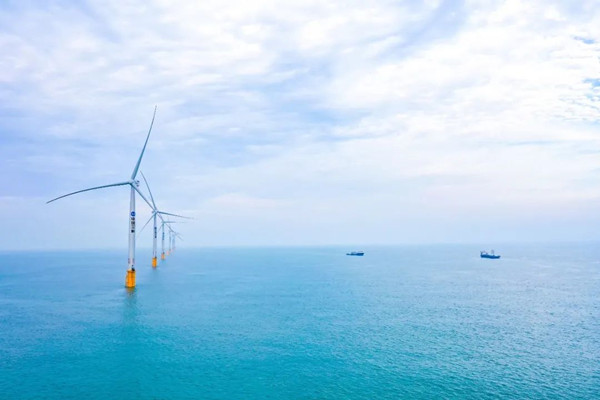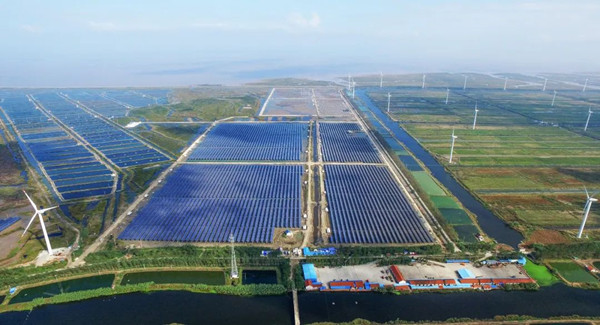Rudong county achieves surplus in green electric power

Rudong county is a pioneer of offshore wind power generation in China. [Photo/WeChat account: rudongfb]
In the first quarter of 2022, Rudong county – administered by Nantong in East China's Jiangsu province – generated 2.8 billion kilowatt hours of electricity through wind power and solar power, 985 million kWh more than the county's industrial and domestic household electricity consumption in the same period.
This is said to mean that the green electric energy generated in Rudong can not only meet local demand, but can also be supplied to other regions.
Targeted at growing into a national model for green energy, Rudong has taken the provision of clean and low-carbon energy as its main direction, in the process propelling the development of wind power and solar power generation in recent years.
The first offshore wind power facility adopting flexible direct current or DC transmission technology in Asia – comprising the H6, H8 and H10 wind power plants in Rudong – is able to generate 9.04 million kWh of electricity every day, which can meet the annual consumption needs of 4,000 households.
Moreover, wind power generation is widely said to offer outstanding environmental and social benefits. Compared with tradition thermal power, some 5.5 million metric tons of standard coal can be saved every year – cutting carbon dioxide and sulfur dioxide emissions by 18.82 million tons and 54,900 tons, respectively – according to Zhang Jun, deputy director of the county's development and reform commission.

An aerial view shows an enormous solar power generation project in Rudong. [Photo/WeChat account: rudongfb]
In addition to wind power generation, Rudong also focuses on solar energy. It is home to the country's first solar power plant that integrates fish farming and solar energy.
With the rapid development of the wind power and solar power sectors, Rudong is said to be playing an increasingly important role in contributing to the country's pledge to reach peak carbon emissions by 2030 and carbon neutrality by 2060.


